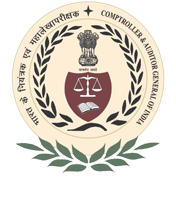Audit Reports

Jharkhand
Report No. 2 of 2020 - General, Social & Economic Sectors, Government of Jharkhand for the year ended 31 March 2018
Overview
The Audit Report on General, Social and Economic Sectors of the Comptroller and Auditor General of India, Government of Jharkhand for the year ended 31 March 2018, prepared under Article 151 of the Constitution of India was submitted to the Governor of Jharkhand on 18 August 2020. The report was presented to the State Legislature on 21 September 2020.
This Report contains Performance Audit on Modernisation of Police Force in Jharkhand and four Compliance Audit paragraphs on different issues. Brief of findings in the Report are as under:
Performance Audit on Modernisation of Police Force in Jharkhand
The scheme of Modernisation of Police Force (MPF) was launched in order to supplement the efforts of the State Government to modernise the police force to effectively face the emerging challenges to internal security and to reduce the dependence of the State Government on the Army and Central Armed Police Forces (CAPF) to tackle the problems of internal security and law and order. A Performance Audit on the implementation of MPF Scheme and other modernisation activities undertaken by the State Government covering the period 2013-18 revealed the following:
The State Government had not framed a State Police Act to replace the Police Act, 1861 as of October 2019. The State Police Board has not been created to frame broad policy guidelines and evaluate organisational performance against identified performance indicators. Area specific internal security scheme to deal with problems of public order and internal security has also not been framed.
(Paragraph 2.1.7)
Preparation of a strategic plan to identify resource gaps and setting up milestones to bridge these by mapping the assets and resources has just begun in 2019-20. As a result, though the Department prepared Annual Action Plans (AAPs) within the tentative allocation communicated by MHA during 2013-18, these plans did not flow from any long term need assessment and planning. Further, the AAPs were submitted with delays ranging from 99 to 168 days.
(Paragraph 2.1.8)
The Department did not release State share of ₹ 52.25 crore under MPF Scheme and could not utilise Central share of ₹ 4.22 crore during 2013-18. There was loss of central grants of ₹ 21.31 crore (2016-18) due to poor pace of utilisation. As a result, the AAPs were not fully implemented during 2013-18.
(Paragraph 2.1.9)
The State police was dependent on phased out weapons for operational purpose due to increase in shortage of modern weapons from 28 per cent (April 2013) to 32 per cent (April 2018). Besides, distribution of arms and ammunition among the field units was skewed.
(Paragraphs 2.1.10.1 and 2.1.10.4)
The shortage of BP jackets ranged between 43 and 100 per cent in 12 test-checked State Armed Police Force Battalions thereby increasing the risk of casualties during operations.
(Paragraph 2.1.11.1)
The Department was yet to fix norms for different kinds of vehicles to be attached with police units keeping in view the hilly terrain and jungle tracks of the State besides risk of landmines during Naxal operations. Out of 545 Special Report Cases analysed in 41 test-checked Police stations/Out posts, the response time was more than two hours in 116 (22 per cent) cases.
(Paragraphs 2.1.12.1 and 2.1.12.3)
The Department could not maintain the minimum level of efficiency in communication due to shortage of communication sets which ranged between 37 and 71 per cent. Further, the State police was mainly dependent on analog sets (91 per cent), which are susceptible to interception, for communication.
(Paragraphs 2.1.13.1 and 2.1.13.2)
Counter Insurgency and Anti-Terrorism trainings were provided to police personnel who were above the stipulated age norms. Further, proper training was not being imparted to police personnel due to absence of instructors, training equipment and other facilities in the training institutes. Sufficient target practice was not provided to police personnel due to shortage of ammunition and non-availability of firing ranges. Besides, 35 per cent of police personnel, imparted training in four test-checked training institutes, could not clear the final tests.
(Paragraph 2.1.14)
Forensic set up was not up to the mark at the district, regional and State level. The State Forensic Science Development Board, responsible for ensuring continuous development of forensic science services, remained non-functional after its creation in September 2011. The Department did not set up five divisions of State Forensic Science Laboratory, obtain NABL accreditation and finalise the “Jharkhand State Forensic Science Laboratory Service Rules 2012 (Recruitment Rules)”. Vacancies of 64 per cent in technical posts and 93 per cent in non-technical posts coupled with shortage of facilities resulted in delay in analysis of exhibits for more than five years (19 per cent involving 934 out of 4,795 pending cases) and for one to five years (56 per cent involving 2,681 out of 4,795 pending cases).
(Paragraph 2.1.15)
Housing facilities for police personnel were not sufficient and could accommodate only 8.66 per cent of police personnel. Construction of five police lines at Giridih, Hazaribag (JAP-7), Koderma, Latehar and Lohardaga could not be completed and made operational even after 11 years of commencement despite incurring expenditure of ₹ 170.21 crore. Test-checked Police stations and Out-posts lacked basic facilities like buildings, magazines, separate lock-up, boundary wall, watch tower, barbed wire fencing etc.
(Paragraph 2.1.16)
The State police continue to be dependent on the CAPFs for curbing the Naxal menace. Analysis of operations in the test-checked districts revealed that 69 per cent operations were conducted solely by CAPFs, 25 per cent operations jointly by CAPF and the State forces and only six per cent solely by the State forces. JJ (STF), created especially to check Naxal activities, participated in joint operations with CAPFs and the State police forces. Thus, the State could not reduce dependency on CAPFs.
(Paragraph 2.1.17.2)
Compliance Audit Paragraphs
1. SCHOOL EDUCATION & LITERACY AND PLANNING-CUM-FINANCE DEPARTMENTS
Purchase of desks-cum-benches at rates above DGS&D rates in violation of financial rules led to avoidable expenditure of ₹ 2.28 crore. Besides, 1,087 desks-cum-benches worth ₹ 81.54 lakh, procured in excess of requirement, were lying idle.
(Paragraph 3.1.1)
2. ROAD CONSTRUCTION DEPARTMENT
Commencement of bridge work over Sanjay River without acquisition of required land for approach roads resulted in the bridge lying idle for three years rendering expenditure of ₹ 7.36 crore idle besides non-achievement of the objective to ensure safe and smooth movement of traffic throughout the year.
(Paragraph 3.1.2)
3. ROAD CONSTRUCTION AND DRINKING WATER & SANITATION DEPARTMENTS
Closure of work of traffic rotary midway by Road Construction Department and failure to utilise DI water supply pipes by Drinking Water and Sanitation Department for eight years despite several opportunities to use them led to expenditure on idle pipes worth ₹ 2.56 crore besides blocking of ₹ 1.65 crore.
(Paragraph 3.1.3)
4. ART, CULTURE, SPORTS & YOUTH AFFAIRS AND RURAL DEVELOPMENT DEPARTMENTS
Construction of stadium without the play-ground due to deficient technical sanction resulted in unfruitful expenditure of ₹ 1.28 crore on the idle structures.
(Paragraph 3.1.4)
Download Audit Report
-
Report No. 2 of 2020 - General, Social & Economic Sectors, Government of Jharkhand for the year ended 31 March 2018
 (3.97 MB)
Download
(3.97 MB)
Download
-
Cover Page
 (0.01 MB)
Download
(0.01 MB)
Download
-
Table of Contents
 (0.06 MB)
Download
(0.06 MB)
Download
-
Preface
 (0.08 MB)
Download
(0.08 MB)
Download
-
Overview
 (0.25 MB)
Download
(0.25 MB)
Download
-
Chapter I - Introduction
 (0.15 MB)
Download
(0.15 MB)
Download
-
Chapter II - Performance Audit
 (2.16 MB)
Download
(2.16 MB)
Download
-
Chapter III - Compliance Audit
 (0.32 MB)
Download
(0.32 MB)
Download
-
Appendices
 (0.54 MB)
Download
(0.54 MB)
Download

